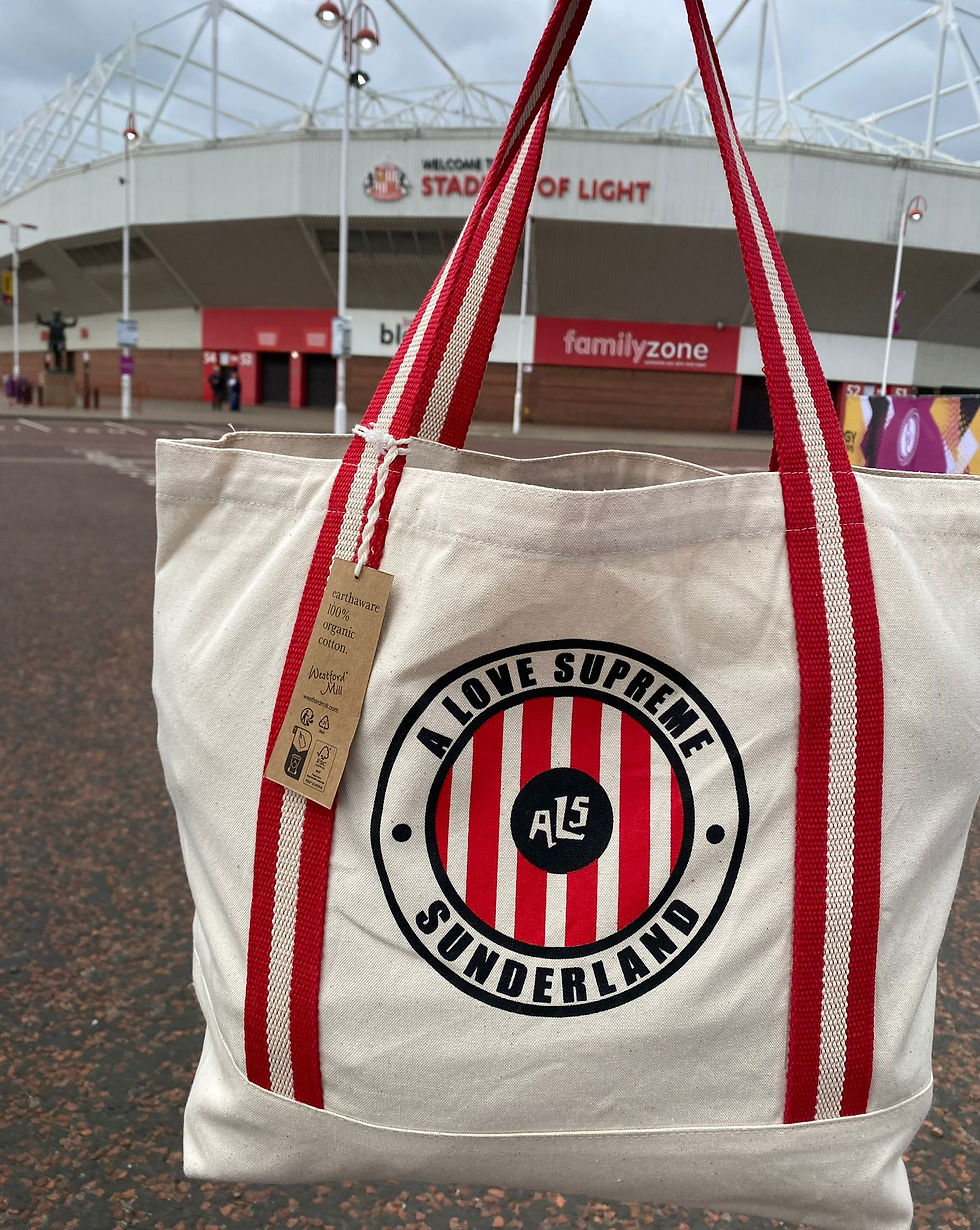OTD: BILL MURRAY RETIRES
- BY SEAN MACKIE
- Jun 26
- 4 min read

On this day in 1957, Bill Murray retired as manager of Sunderland. Murray spent a combined 28 years at SAFC as a player and manager. The amount of time he devoted to our club is unlikely to be ever matched again in an era defined by short term appointments. People with Murray’s commitment are a rarity in football. As a player, Murray made 328 appearances between 1927 and 1936 and took charge of the club from 1936 to 1957, manager for a staggering amount of time - over 500 matches.
Who knows how many more he would have been in the dugout for had the club not been rocked by the ignominious illegal payment scandal of 1956. A League commission had found out that we had been paying players under the table at a time where there was a salary cap in British football. Similarly to the Tour de France and doping, everyone was doing it. It's just we were caught and happened to be one of England’s best clubs, a fixture of the top half who threw money around wildly and they threw the book at us. A year after the scandal broke, Murray retired. A poor ending to his illustrious 28 years.
Before management, before he was even a footballer, he had served with the Gordon Highlanders in the Great War and understandably had not foreseen a career in football. Instead, post war, his sights were on becoming a qualified mining engineer. This would have enabled him to take up a post with a Shanghai based shipping concern but his natural ability as a footballer intervened. Cowdenbeath were an interested team and they allowed Murray to continue his professional studies simultaneously with playing – a perfect compromise. However, he soon gave up his initial career ambitions in order to focus solely on football.
He was rarely injured and extremely consistent, as all of the best players of this era were. He was able to rack up around 500 appearances in Scotland before his eventual transfer to Sunderland at the age of 26. Many players went south of the border in this period of football, with the English leagues of a higher calibre. Murray wanted to test himself at one of England’s top teams. His ambition was rewarded as in the 1934-1935 season we were second place in the First Division and then, the season after, we went one better and were crowned champions of England. He was privileged to share the pitch with some of Sunderland’s greatest ever players, Raich Carter, Bobby Gurney (this duo scored 31 goals each in our League win), Patsy Gallagher and Ernie England. He was a key part in our success in the inter-war years.
Our defence at this time shipped in a lot of goals and the back line came under fire from the press. Bolton Wanderers in 13th were the next team to concede as many goals as us and we were challenging for the title. With this in mind, an alteration of the defence was called for and James Gorman was brought in and Bill Murray went back to Scotland, signing for Paisley. He went on to make 75 appearances before retiring.
Soon, he had returned to Sunderland to replace the outgoing manager Johnny Cochrane. The war was a strange prelude to his time at the club. The suspension of the Football League following the outbreak of war meant that Murray’s first foray into football management got off to a stuttering start. When League action resumed after the war, we finished in ninth place. Murray crafted a cultured and entertaining side, the chief architect of which was the Clown Prince of Soccer himself, Len Shackleton.
It took a while to get the team to gel together and in the 1947–48 season the club finished in twentieth place, on the brink of being relegated from Division One for the first time. "Shack" admitted that the players did not form a cohesive team and added that "it takes time to harness and control a team of thoroughbreds. It took time to achieve the blend at Roker Park".
Under Murray’s stewardship, we paid a world record transfer fee to capture the signing of Welsh striker Trevor Ford from Aston Villa, spending £30,000. He oversaw the "Bank of England club" years in which we also signed Ivor Broadis, who because he was manager of Carlisle at the time, became the first ever player to oversee his own transfer and we also completed the signing of Shackleton for a then world record fee. In 1950, we finished third – our highest placed finish since winning the league in 1936. He also took us to two FA Cup semi finals, but we failed to repeat the triumph of 1937.
Murray, as aforesaid, left the club under inglorious circumstances. The scandal knocked the club and the season after Murray left, we suffered our first ever relegation. If we weren’t hit with sanctions and the discredit, who knows what we would have achieved. Perhaps this initial relegation wouldn’t have happened and SAFC would have remained a regular feature in the top half of the top tier. As Murray left, maybe it was the beginning of the end. Today, the idea of a salary cap is laughable. Like I said, everyone was paying players under the table but we were the ones who were caught.
Bill Murray passed away in his hometown of Aberdeen on the 15th December 1961. Today, it seems as if the term legend is bandied about too often. Some people even use it to describe Lee Cattermole. If you ask many who Bill Murray is, they will probably tell you he is that the face of films like Ghostbusters and Groundhog Day and explain that the man has enjoyed a successful career in American comedy since the late seventies. But Bill Murray is also a Sunderland legend for his longevity and his part in some of the most famous moments (and infamous) moments in our club’s history.




















































